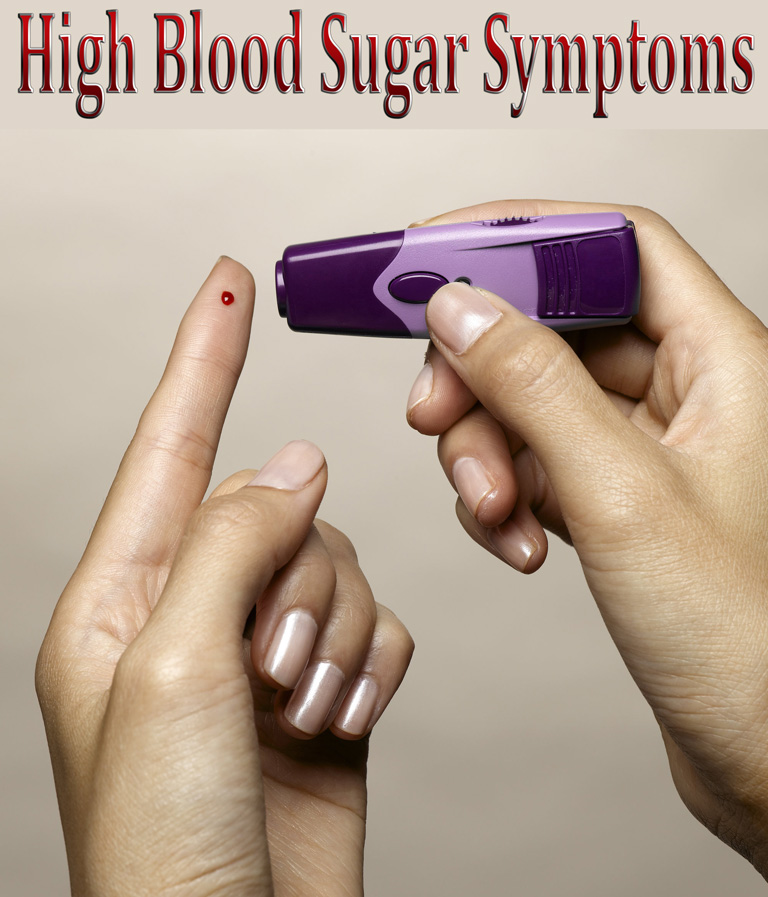
High Blood Sugar Symptoms
If you’ve had diabetes for any length of time at all, you’ve probably seen lists of the signs and symptoms of high blood glucose dozens of times. Doctors and diabetes educators hand them out. Hundreds of websites reprint them. Most diabetes books list them. You likely know some of the items on the list by heart: thirst, frequent urination, blurry vision, slow healing of cuts, and more.
But have you ever stopped to wonder why these symptoms occur? How does high blood glucose cause frequent urination, make your vision go blurry, or cause all of those other things to happen? Here are some answers to explain what’s going on in your body when you have high blood glucose.
Setting the stage
High blood glucose (called hyperglycemia by medical professionals) is the defining characteristic of all types of diabetes. It happens when the body can no longer maintain a normal blood glucose level, either because the pancreas is no longer making enough insulin, or because the body’s cells have become so resistant to insulin that the pancreas cannot keep up, and glucose is accumulating in the bloodstream rather than being moved into the cells.
Blood glucose is commonly considered too high if it is higher than 130 mg/dl before a meal or higher than 180 mg/dl two hours after the first bite of a meal. However, most of the signs and symptoms of high blood glucose don’t appear until the blood glucose level is higher than 250 mg/dl. Some of the symptoms have a rapid onset, while others require a long period of high blood glucose to set in.
It’s important to note that individuals differ in their sensitivity to the effects of high blood glucose: Some people feel symptoms more quickly or more strongly than others. But each sign or symptom has a biological underpinning, or a specific cause behind the effect.
Hyperglycemia can be acute or chronic. Acute hyperglycemia lasts only briefly and is often the result of a high-carbohydrate meal, a missed dose of medicine, stress, or illness. Chronic hyperglycemia, on the other hand, is a state of long-term elevated blood glucose. It is often the result of undiagnosed diabetes or of an inadequate diabetes treatment regimen. Chronic hyperglycemia is arguably the more dangerous of the two, as long-term elevated blood glucose has a toxic effect on the body’s tissues. In fact, some of the signs of high blood glucose are actually the aftermath of cellular damage caused by high blood glucose.
Signs and symptoms of high blood glucose are often what lead people with undiagnosed diabetes to visit their doctors and, consequently, get diagnosed. But signs and symptoms of high blood glucose can also occur after diabetes is diagnosed and treatment has been started. It is a signal that your diabetes has slipped out of control.
The three polys
The classic symptoms of high blood glucose are polyuria, polydipsia, and polyphagia. In plain English, that means excessive urination, excessive thirst, and excessive hunger. Any doctor who hears this trio of complaints will reach for a blood glucose meter. But often, the person experiencing these symptoms doesn’t notice them right away. This is partly because they often creep up on a person in a gradual fashion, and partly because the signs and symptoms of high blood glucose aren’t well known among people who don’t have diabetes – or don’t know they have diabetes.
Here’s what’s behind these classic three high blood sugar symptoms:
Excessive urination. Polyuria is the result of a runaway biological and chemical chain reaction that feeds on itself. It starts in the blood, where high glucose concentrations osmotically pull intracellular fluid into the bloodstream. This is the body’s attempt to equalize the concentration of glucose in the blood with the concentration in the cells. By diluting the blood with intracellular fluid, the body brings the glucose concentration of the blood closer to normal. Initially, this increases the fluid volume of the blood while dehydrating the cells.
Meanwhile, in the kidneys, a related dysfunction is brewing. Normally, the kidneys serve as filters, removing waste products and returning cleansed fluid back to the body. The return of the cleansed fluid – or reabsorption of fluid – takes place in the renal tubules, the internal structure of the million or so filtering nephrons in each kidney. However, when the glucose concentration of the fluid entering the nephrons exceeds 250 mg/dl, the reabsorption capacity of the renal tubules is blocked, triggering what is known as osmotic diuresis –a discharge of large amounts of urine. Until the glucose levels are normalized, the renal tubules can’t regain the ability to absorb fluids.
So a dual chain reaction has begun. The cells are pumping water into the bloodstream, and the kidneys, unable to reabsorb this fluid during filtering, are uncontrollably flushing water from the body. The result is runaway urination.
To meet the clinical definition of polyuria, urine output for an adult must exceed 2.5 liters per day (normal urine output is 1.5 liters per day); however, extremely high blood glucose can lead to outputs of 15 liters (about 4 gallons) per day, a fluid loss similar to that seen in cholera victims. In rare cases, polyuria can top out at 20—25 liters per day, about half the body’s total fluid volume.
The dehydrating effect of polyuria is a key player in many of the other signs and symptoms of high blood glucose, including polydipsia.
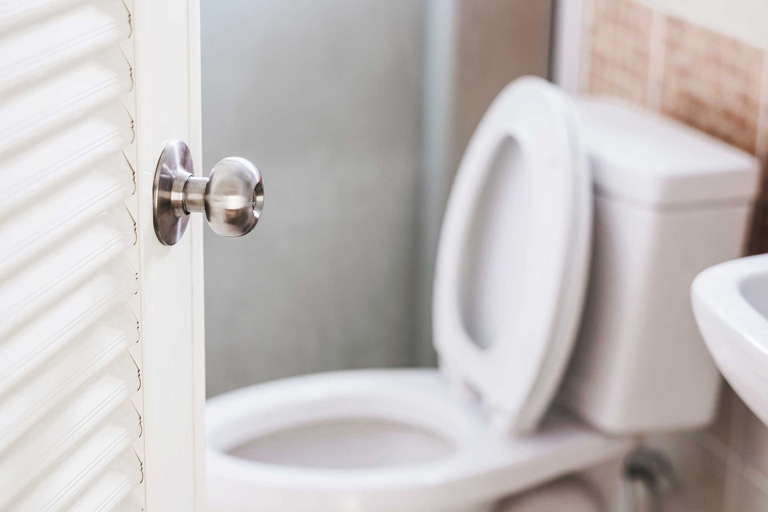
Excessive thirst. Polydipsia is a response to the dehydrating effects of polyuria; it’s the body’s attempt to rehydrate itself. Thirst signals in the brain are triggered by osmoreceptors, specialized cells in the hypothalamus that detect the level of plasma osmolality – the level of dehydration of the blood – and create the urge to drink fluids when a person is dehydrated.
The relationship between excessive urination and excessive thirst is often misinterpreted by people experiencing high blood glucose, especially before diabetes is diagnosed. Many people assume that excessive urination is caused by the excessive thirst, and not the other way around. So they are quick to discount the excessive urination, thinking “Well, I’ve been drinking a lot lately…”
Complicating matters, many people reach for a soda when they’re thirsty, and most sodas contain both some form of sugar and caffeine. The sugar raises the blood glucose level even higher, and the caffeine, a diuretic, makes the polyuria worse. Together they increase thirst rather than resolving it.
Excessive hunger. Excessive hunger isn’t really caused so much by a high blood glucose level as by a low insulin level. The low insulin level can be either an absolute shortage of insulin, as in Type 1 diabetes, or it can be a relative shortage of insulin, as in Type 2 diabetes. In either case, the amount of insulin in the blood is insufficient to move glucose molecules from the bloodstream into the cells, where they can be used as fuel for cellular processes.
If cells aren’t able to gain access to glucose, they send out hunger signals via a variety of signaling hormones, including leptin, ghrelin, orexin, and PYY 3-36. All of these hormones signal the brain’s hypothalamus to trigger the sensation of hunger. The cells have no way of knowing that they’re starving in the land of plenty: The glucose they need exists in abundance nearby in the bloodstream, but the relative deficiency of insulin makes it inaccessible. This ultimately leads to hunger pangs that, perversely, make high blood glucose worse when a person responds by eating.
Weight loss
Even though you may be eating like crazy when your blood glucose is chronically high, you will still lose weight, and there are three reasons for this:
First, the loss of fluids from excessive urination can lead to a low level of body fluids, which can make you weigh less. This is what often accounts for very rapid weight loss with new-onset diabetes.
Second, if insulin levels are too low for glucose metabolism, your body will switch to burning fat to maintain cellular metabolism, and burning fat can lead to weight loss (just what you’re trying to do at the gym, right?).
Third, the large amount of urine that is generated by high blood glucose is rich with glucose – sometimes in excess of 1,000 mg/dl. That glucose is full of calories, so when there are high levels of glucose in your urine, you’re literally peeing calories away as your body tries to jettison the excess glucose. If your high blood glucose level is a new development, you previously maintained a stable weight, and you make no change in your eating habits, you’ll lose weight as a consequence of high blood glucose.
Teenage girls with Type 1 diabetes have been known to manipulate this biological phenomenon via an eating disorder called diabulimia. They keep their weight low by keeping their blood glucose high, allowing them to eat more food while maintaining a lower body weight. But doing so comes at the price of life-threatening complications.
Infections
Your body’s cells aren’t the only inhabitants of the microscopic world that eat glucose: Many bacteria and yeasts do, too.
Urinary tract infections (UTIs) and yeast infections can occur in both men and women, but they are much more common among women, and they’re particularly common among women with diabetes. In fact, women with diabetes are two to three times more likely to have bacteria in their urine than women who don’t have diabetes.
Both bacteria and yeast thrive in warm, dark, moist places and feed on glucose. Chronic yeast infections are common in women with chronically high blood glucose. The cause may simply be a case of supply and demand: More glucose gives yeast more opportunities.
UTIs, on the other hand, are quite a bit more complicated, and high blood glucose contributes to them in several ways beyond providing glucose-rich urine for the bacteria to grow in. Long-term elevated blood glucose can lead to a number of complications, including neuropathy, or damage to nerve tissue, which can affect a wide variety of body systems. Neuropathy can affect the bladder’s ability to contract properly, causing incomplete emptying. This leaves behind residual pools of static urine in the bladder – the perfect growth culture for bacteria.
In addition, elevated glucose reduces blood circulation, which in turn reduces the ability of infection-fighting leukocytes (white blood cells) to get where they are needed in a timely manner in sufficient numbers to fight off infections. High blood glucose also reduces phagocytosis, the process leukocytes use to ingest bacteria.
Slow healing of cuts and wounds
High blood glucose greatly slows the healing of skin and soft-tissue infections because neutrophils, the most common type of leukocyte in the immune system’s arsenal, are particularly vulnerable to high levels of glucose. High blood glucose keeps the neutrophils from sticking to the endothelium, the inner lining of the blood vessels; disrupts chemotaxis, the body’s chemical signaling control system that directs neutrophils to the site of injuries or infections; and, as noted above, makes phagocytosis sluggish.
Another critical element of wound healing is a sufficient supply of oxygen, and the delivery of oxygen can be reduced by either peripheral neuropathy (nerve damage) or peripheral vascular disease (blood vessel disease) – both common conditions caused by or made worse by high blood glucose.
The slow healing of wounds sets the stage for some of the grimmest diabetes complications. Minor wounds can advance to cellulitis, which is a serious infection. Cellulitis can advance to tissue necrosis, or tissue death. Tissue necrosis can then extend from the soft tissue into the bone, which is what often leads to amputation: More than 66,000 amputations were performed on persons with diabetes last year.
Dry, itchy skin
A less dangerous but highly vexing and common side effect of high blood glucose is dry, itchy skin. Dry skin can be linked to high blood glucose in a few different ways. The first is excessive urination, which can actually dehydrate you to the point that your skin tissues begin drying out.
The second greatest cause of dry, itchy skin is poor blood circulation. In fact, skin problems on the feet and lower legs are a sign of atherosclerosis – hardening and narrowing of the arteries and its attendant reduction in circulation – a disease all too common in people with diabetes.
Last but not least, nerve damage can interfere with the normal operation of sweat glands, affecting one of skin’s natural moisturizers and leading to dry skin.
Another skin condition linked to high blood glucose is called diabetic dermopathy. Unique to people with diabetes, diabetic dermopathy shows up as scaly circular or oval patches of discolored skin that resemble age spots. The patches are caused by damage to capillaries from high blood glucose. Diabetic dermopathy is not considered dangerous, and there is no treatment for it, but it serves as a visual sign of high blood glucose.
Blurred vision
Speaking of dryness, blurry vision from acute high blood glucose is also a result of the dehydrating effect of excessive urination. As you will recall, when the concentration of glucose in the blood is high, the body attempts to dilute the blood by pulling fluid from cells into the bloodstream. This effect happens throughout the body, including in the cells of the eyes. When the lens of the eye gets dried out, it becomes temporarily warped, and the eye loses its ability to focus properly.
Chronic high blood glucose, on the other hand, can lead to retinopathy, or damage to the back of the eye that can affect vision and ultimately even lead to blindness. Recent research has shown that by the time of diagnosis, 35% of people with Type 2 diabetes already have some degree of retinopathy. This is because in most cases, people with Type 2 diabetes have elevated blood glucose levels for an extended period before their diabetes is diagnosed. This is also why the American Diabetes Association recommends that people with Type 2 diabetes have an initial dilated and comprehensive eye exam shortly after diagnosis.
Headaches and difficulty concentrating
Acute hyperglycemia can cause headaches and difficulty concentrating in a fashion similar to polyphagia – in which starving cells send out hunger signals because they can’t access the glucose circulating in the blood.
Your brain is the biggest glucose hog around. If you don’t believe it, consider that while the brain represents about 2% of your body weight, it devours fully 25% of the glucose you consume. And when brain cells have difficulty getting the fuel they need, they function poorly. This can cause problems with thinking, reasoning, and remembering, difficulty staying focused on tasks, and headaches.
Chronic high blood glucose can also lead to headaches, but by a different route. These headaches are often related to various types of nerve damage. Examples include occipital neuropathy, or damage to the optic nerve from elevated glucose levels, and a variety of diabetic mononeuropathies, which can affect specific cranial nerves, peripheral nerves, or nerve roots – all of which can lead to headaches of varying intensities.
Fatigue
When your blood glucose is high, your body is neither storing nor utilizing glucose properly. You’re not burning energy efficiently, nor are your cells getting the fuel they need when they need it. The overall effect is a lowering of physical energy on the cellular level. If you are also suffering from a lack of proper sleep due to excessive urination during the night, you will feel even more tired.
In fact, nearly all the signs and symptoms of high blood glucose can contribute to making you feel fatigued, even exhausted. Exhausted people often resort to eating high-carbohydrate snacks for a boost of quick energy, and this, of course, raises the blood glucose level more, making the problem worse rather than better.

Chronic constipation or chronic diarrhea
Both constipation and diarrhea can be caused by high blood sugar, acting on different sections of the bowel. When high blood glucose affects the small intestine, the result is often diarrhea; when it affects the large intestine, the result is often constipation.
The two intestines have very different jobs, which helps to explain how high blood glucose can affect them differently. The job of the small intestine is to absorb nutrients from digested food, and the job of the large intestine is to absorb water from indigestible waste material.
When neuropathy from elevated blood glucose affects the enteric nerves – the gut’s command and control system – in the small intestine, the result can be dysfunctions in motility, leading to delayed emptying into the large intestine. This causes the stagnation of fluids in the small intestine, allowing bacterial overgrowth that causes bloating, abdominal pain, and diarrhea. Frequent diarrhea is seen in 22% of persons with diabetes. Enteric neuropathy, in addition to laying the ground work for bacterial overgrowth, can in itself be a painful chronic condition similar to the foot pain suffered by people with peripheral neuropathy.
In a similar way, nerve damage can slow the movement of waste through the large intestine. Slow-moving waste is essentially dehydrated – or dried out too much – by the large intestine, resulting in constipation.
Constipation can also be caused or made worse by the dehydrating effects of excessive urination and by some medicines, especially narcotic pain killers, some antidepressants, and the calcium channel blocker class of high blood pressure medicines.
Erectile dysfunction
Erectile dysfunction, or difficulty maintaining an erection, is a common side effect of high blood glucose, and roughly half of men with diabetes over the age of 50 experience it.
A healthy erection requires healthy nerves, healthy blood flow, the right balance of hormones, and sexual stimulation. The mechanics of it are anything but simple. For an erection to occur, a number of complicated hydraulic events has to happen that cause the penis to fill with blood, and then keep the blood trapped inside the penis for a time.
The “action center” of the penis is the corpora cavernosa, a pair of chambers of spongy tissue on either side of the shaft. To form an erection, nerve signals cause the blood vessels that supply the corpora cavernosa to dilate, so that blood flow to the chambers increases. As the spongy tissue engorges with blood, it collides with an outer sheath of elastic tissue that encases the chambers. This temporarily chokes off the veins that drain the blood back out of the penis, allowing the erection to stabilize.
High blood glucose can adversely affect erections in three ways: hormonal, vascular, and neurologic. On the hormonal front, high blood glucose interferes with the body’s production of nitric oxide, a so-called vasodilator that triggers the hormonal chain reaction that relaxes the blood vessels and allows the corpora cavernosa to fill with blood. On the vascular front, high blood glucose can be incredibly damaging to blood vessels, potentially reducing the ability of the supply arteries to dilate. In a similar fashion, nerve damage from high blood glucose can affect both sensation and nerve signaling involved in the erection process.
Making matters worse, there are a number of common medicines that can contribute to or worsen erectile dysfunction. Many high blood pressure pills, especially those in the families of beta blockers and diuretics, and some antidepressants, can interfere with vasodilation (or the widening of blood vessels). Since both high blood pressure and depression frequently accompany diabetes, it’s common for men with diabetes to be on one or more of these medicines. Lifestyle, too, can increase the risk of erectile dysfunction. For instance, smoking is known to narrow the blood vessels.
High blood pressure can also contribute to erectile dysfunction, as can a build-up of low-density lipoprotein (LDL) cholesterol in the corpora cavernosa supply arteries. How’s that for motivation to take your statin?
The good news is that the drugs Viagra (sildenafil), Cialis (tadalafil), and Levitra (vardenafil) can all help counteract the loss of nitric oxide, helping the blood vessels dilate, and increasing blood flow to the penis. The bad news is that these drugs are less likely to work for men with diabetes. Their method of action is on the hormonal and vascular side of the equation, while the cause of erectile dysfunction among men with diabetes is more often traced to nerve damage, which doesn’t respond to these medicines.
Irritability
My wife says I get “pissy” when my blood glucose exceeds 250 mg/dl, and she’s not talking about polyuria. The mood-altering effects of high blood glucose are well known to the loved ones of persons with diabetes and well documented by research. But the biological nuts and bolts behind the emotional response aren’t well understood. Also well documented is the fact that high blood glucose causes depression and negatively affects rapid thinking and decision-making skills.
The theories that have been floated to explain the mood-altering effects of high blood glucose range from the mundane theory that because the brain is dependent on a steady supply of glucose for energy, changes in blood glucose concentration rapidly affect cerebral function; to middle-of-the-road theories that high blood glucose affects nerve conduction velocity in the brain; to more exotic theories that the effects are the result of complex relationships between little known hormones and proteins.
But when you consider all the other biological manifestations of high blood glucose – the three polys, infections, slow healing of injuries, itchy skin, blurred vision, headaches, fatigue, and gastro-intestinal distress – is it any wonder we might be irritable?
Getting into control
While the causes that lie behind the symptoms of high blood sugar are fascinating, the real value of symptoms is in the message they carry: Blood glucose is too high. The symptoms are warning signs, and we ignore them at our peril. High blood glucose does more than trigger biological and chemical processes that make you feel crummy; over time, high blood glucose causes permanent damage to the body.
But you have it in your power to make the symptoms go away, and to keep them from coming back, by keeping your blood glucose in control. And you’re not alone in this task. Talk to your doctor. Make time to see a diabetes educator. Ask your family members for their support in helping you to eat right and keep active. Use the tools available to you, such as your blood glucose meter, to see whether your numbers are in target range most of the time. If they are not, talk to your medical team about adjusting your therapy.

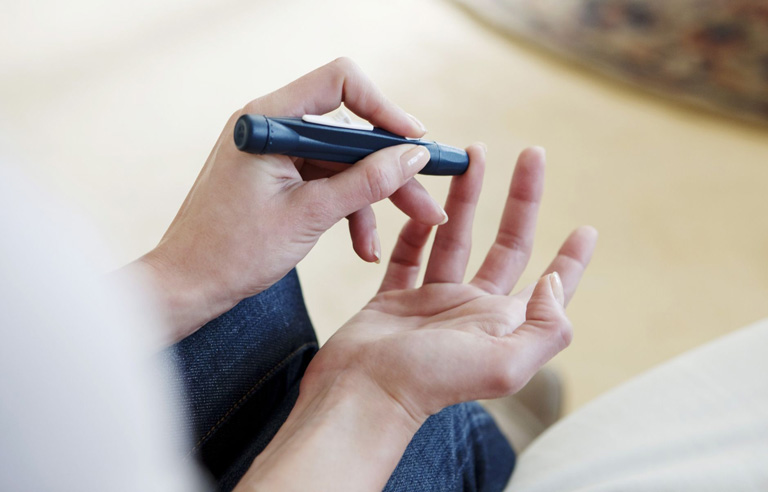
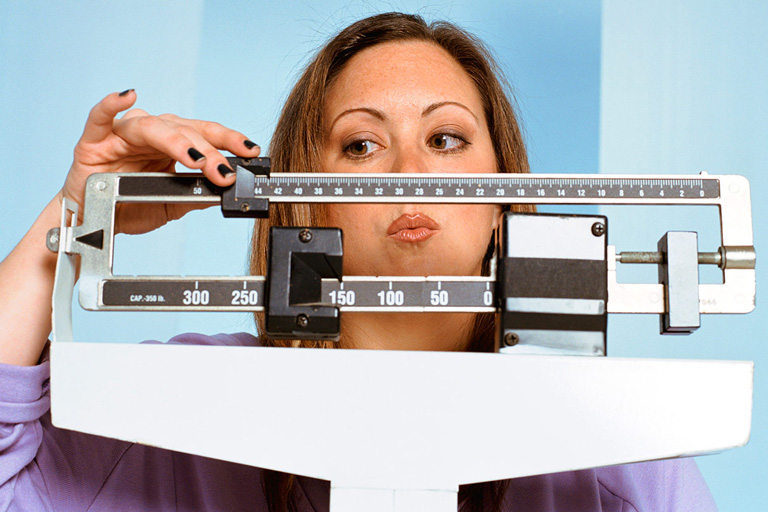
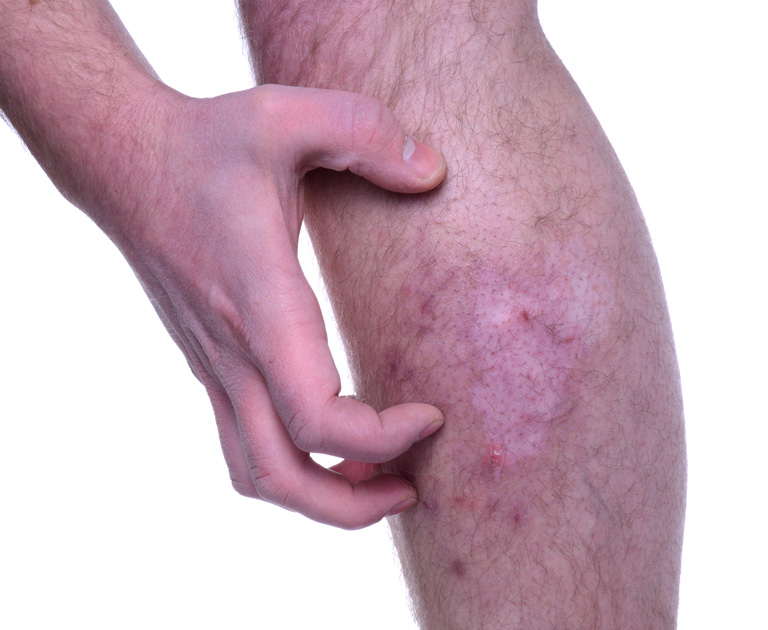



Leave a Reply